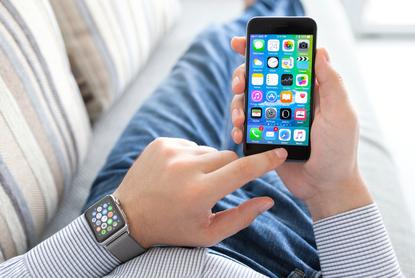Smartwatch wearers: fitter, happier, more plentiful
- 06 September, 2016 11:25

Smartwatch sales in Australia have boomed in the first half of 2016, up 89 per cent on the same period last year.
Findings from the Telsyte Australian Smartphone & Wearable Devices Market Study 2016-2020 found that one in three smart wearables sold in the first half of 2016 were smartwatches compared to less than a quarter in 2015.
Smartwatches – such as the Apple Watch, Samsung Gear and Fitbit Blaze – are likely to increase their share of the wearables market over more basic smart fitness trackers such as those produced by Fitbit and Garmin, Telsyte said.
The growth is being driven by consumers’ focus on health and fashion, as well as longer smartphone replacement cycles, price reductions and better availability of useful apps, Telsyte managing director, Foad Fadaghi said.
“As smartphone replacement cycles have lengthened, consumers are turning to other gadgets and smartwatches have started to capture the imagination. We might be seeing the beginning of a substitution effect where consumers are choosing a smartwatch over a new smartphone.”
The research, an online survey of around 1400 Australians, found that that 47 per cent of smart wearable users exercise a minimum equivalent of 30 minutes walking per day compared to 30 per cent for the general public, indicating wearers were more health conscious than the general population. Telsyte said they also more likely to make contactless payments.
“The killer apps for early adopters of smartwatches seem to be fitness apps and mobile payments,” said Fadaghi. “Price reductions and greater availability through carrier channels, including bundles and repayment plans make buying a smartwatch easier and more affordable and more stylish designs and options for watch faces and bands have greater appeal to both genders.”
More than 1 million smart wearable devices were sold during the first half of the year in Australia. Among the smartwatch brands, Apple Watch was found to be the most popular with a more than 50 per cent market share.
Telsyte estimates 14 per cent of Australians of all ages, approximately 3.5 million individuals – currently wear a smart wearable device.
The firm forecast that 37 per cent of Australians will be wearing some kind of smart wearable by 2020. Over the next two years, Telsyte predicts a substantial increase in sales driven by the release of a second generation Apple Watch, continued price decreases and increased uptake of mobile payments on Apple and Android compatible wearables.
The growth of smart wearables is forecast to have a significant effect for businesses. Gartner predict that, by 2018, two million employees will be required to wear health and fitness tracking devices as a condition of employment. The research organisation also predicts that by 2017, at least one executive at a top ranking global enterprise will have to wear a health and fitness monitor as part of their contract.
CIOs have increasingly been preparing themselves for the so-called enterprise wearables boom.
The Apple Watch 2 is expected to be unveiled alongside the iPhone 7 at a launch on Wednesday. Samsung recently announced its latest smartwatch, the Gear S3, which will be available in October.

